Get Red Hot and Dirty with the Naked Scientists as we explore the science of volcanoes. We discover how the heat from hot rocks can be used to work out what gases are emerging, how likely a volcano is to erupt and whether it will go with a bang or a whimper. We also hear how hot runny rock can shatter under pressure to trigger an earthquake, and dip into the cooler, dirtier world of mud Volcanoes, like Lusi, which is currently pouring millions of gallons of mud onto the island of Java. Plus, we find out how a small date plant made history by being the oldest seed ever to germinate, why the paper of the future could be as tough as iron, and, in Kitchen Science, Ben and Dave provoke an eruption of their own!
In this episode
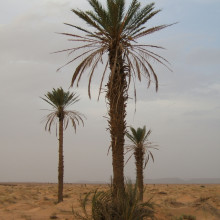
Dated horticulture - scientists grow 2000 year old seed
Carbon dating has confirmed that scientists have broken the record for growing the world's oldest seed - a date dating from 2000 years ago.
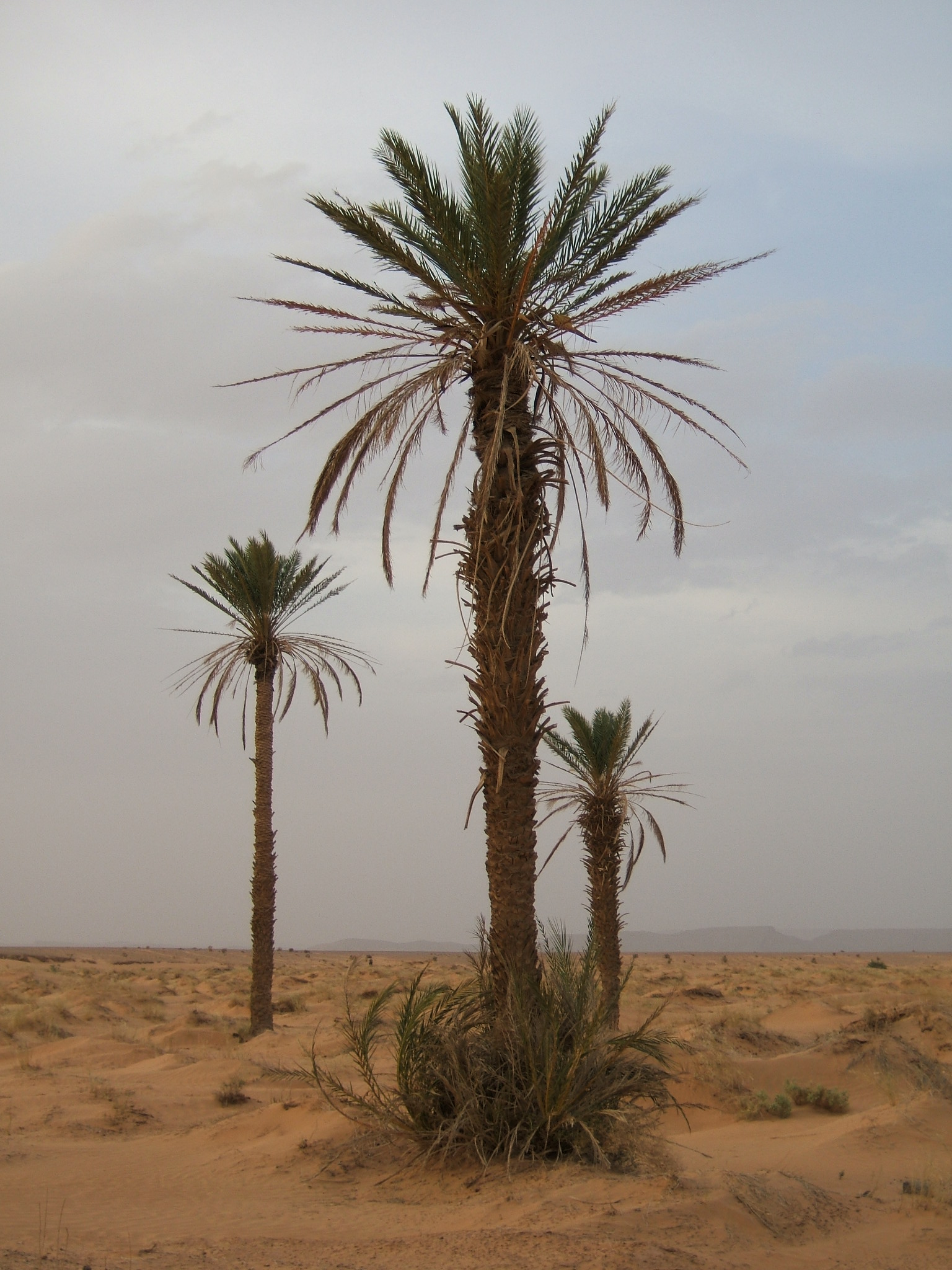 In the 1960s archaeologists excavated the fortress of Masada, which overlooks the Dead Sea, and uncovered a clutch of seeds in one part of their dig. The seeds spent the next 40 years in a museum before researcher Sarah Sallon, from the Hadassah Medical Organisation in Jerusalem, obtained some of them for research.
In the 1960s archaeologists excavated the fortress of Masada, which overlooks the Dead Sea, and uncovered a clutch of seeds in one part of their dig. The seeds spent the next 40 years in a museum before researcher Sarah Sallon, from the Hadassah Medical Organisation in Jerusalem, obtained some of them for research.
Two were carbon dated, which confirmed that they were at least 2000 years old, whilst the other three the researchers planted. Incredibly one sprouted and over the past 26 months has turned into a handsome date palm. To prove the authenticity of the plant the researchers teased the original seed case away from the roots and this too was carbon dated, which proved that this seed was certainly over 2000 years old.
Now the team have also genetically fingerprinted the date plant, which they have called "Methuselah" after the oldest person in the Bible, and found that it is significantly different from modern date plants, sharing only about 50% of its genes with them. This means that if Methuselah turns out to be female, which the team won't know for another year or two, it could be used to effectively bring back old dates from the dead.
Moreover, according to ancient texts, the plants also had medicinal properties, which the team plan to explore next. The discovery, which is described in this week's edition of the journal Science, steals the record for the oldest seed to be successfully germinated. Previously the holder of the title was a 1300 year-old lotus seed.

Will removing oil destabilise the Earth?
Chris - The answer we trot out is the oil volume relative to the crust of the Earth is very minor. Situations like this highlight the fact that there can be consequences. Richard - This is something that happens probably a few times a year around the world. What's happened here has been unfortunate in that the area was ready for a mud volcano before. In other words geologically the conditions were suitable. Unfortunately this company drilled a well which had operational problems which provided the pipe work, the plumbing so that the mud volcano would form. This is something that happens a handful of time each year. This is the worst case in that unfortunately it happened in a populated area and it brought a lot of mud with it. Chris - People are probably going to be quite surprised to learn that we do have one of these in Britain although, thankfully, not on the scale of the Indonesian example. Richard - Yes. It is nowhere near on the scale of the Indonesian example and it is a natural occurrence. These are very small mud volcanoes outside Swindon but what I like about them is they provide an analogue for what's happening in Java right now. It's actually a limestone, a Corallian which is a Jurassic aged limestone: 150-160 million years old. It's supplying fluid and the fluid is then passing through a clay called the ampthill clay and the clay is brought to the surface. It actually has with it a number of beautifully preserved ammonites.
Chris: That saves fossil hunters a bit of effort. Richard, thank you very much.
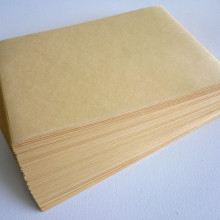
Nano-paper stronger than cast iron
Researchers based in Sweden have created paper that can withstand more force before breaking than cast iron. The paper isn't made from anything unusual; like all paper, it consists mostly of cellulose: the common sugar polymer found in wood which gives plant cell walls their strength.
The key to the super-strong paper is its internal structure: like all paper it's made up of cellulose fibres just a few nanometres across (thousands of times thinner than a human hair). In normal paper thousands of these tiny fibres are bound up into much larger fibres which you can see if you look carefully at the torn edge of a piece of paper. These larger fibres are quite strong but very weakly attached to one another so the paper itself is weak.
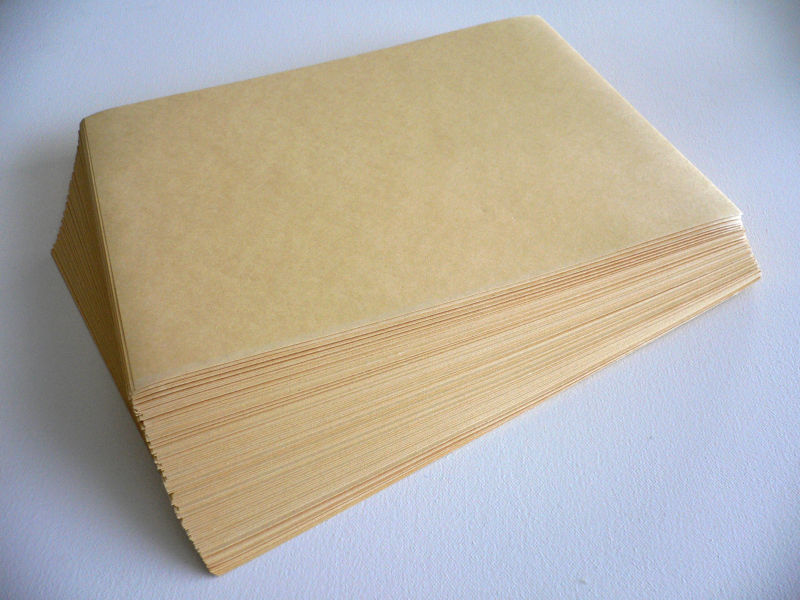 Lars Berglund and colleagues from the Swedish Royal Institute of Technology Stockholm, publishing in Biomaterials, explain that the secret to producing much stronger paper. They process wood more gently than the usual destructive mechanical pulping. Digesting wood pulp with enzymes and fragmenting with a beater keeps the nano-sized cellulose fibre structures intact, about 1000 times smaller than typical paper fibres. These nanofibres meet t one another so much more often that the larger ones so there are far more bonds between fibres and the paper is 214 times stronger than the average writing sheet, and stronger than cast iron.
Lars Berglund and colleagues from the Swedish Royal Institute of Technology Stockholm, publishing in Biomaterials, explain that the secret to producing much stronger paper. They process wood more gently than the usual destructive mechanical pulping. Digesting wood pulp with enzymes and fragmenting with a beater keeps the nano-sized cellulose fibre structures intact, about 1000 times smaller than typical paper fibres. These nanofibres meet t one another so much more often that the larger ones so there are far more bonds between fibres and the paper is 214 times stronger than the average writing sheet, and stronger than cast iron.
Berglund suggests the technology could be used to reinforce paper or tape, or to help create tougher replacements for biological tissue.
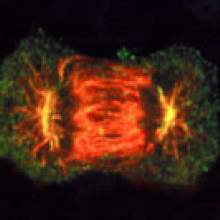
Cancers control cells elsewhere in the body
Scientists have found that tumours can produce factors that encourage the growth of stray cancer cells lurking elsewhere around the body.
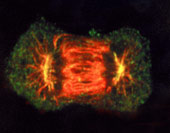 Writing in this month's edition of the journal Cell, MIT researcher Robert Weinberg and his colleagues injected mice with cells derived from human breast cancers. The mice were also injected, elsewhere in the body, with a second type of cancer cells that normally grow only very slowly. However, this time, these secondary cancers grew very fast.
Writing in this month's edition of the journal Cell, MIT researcher Robert Weinberg and his colleagues injected mice with cells derived from human breast cancers. The mice were also injected, elsewhere in the body, with a second type of cancer cells that normally grow only very slowly. However, this time, these secondary cancers grew very fast.
The cause, the team found, was that the breast cancer cells elsewhere in the body were secreting chemical signals into the animals' bloodstreams that were speeding up the growth of the secondary tumour, although not directly. Surprisingly, the chemical signals were triggering bone marrow cells to migrate to the secondary tumours and feed them, accelerating their growth.
To understand how, the researchers looked at blood samples from the mice and found that the levels of one hormone, called osteopontin (OPN), was three times higher than normal. And when the team prevented the breast cancer cells from producing it, the bone marrow cells stopped feeding the secondary tumours, which in turn stopped growing. This suggests that the same trick could be used in humans to stall the spread of tumours.
"If metastases [cancer cells in other parts of the body] depend on stimulation by the primary tumour, interception of the signal through [for instance] neutralising antibodies might block cancer spread," says Weinberg.
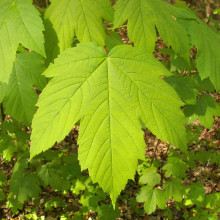
Tree leaves keep it cool
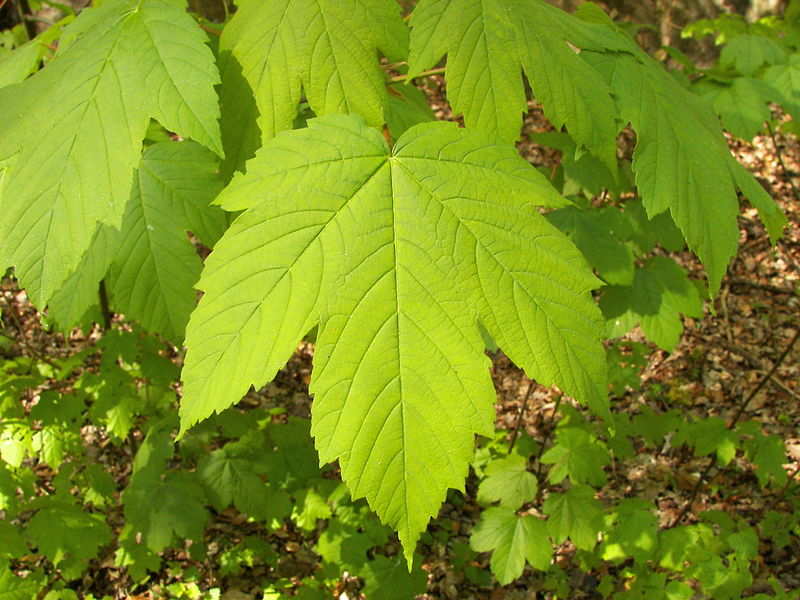 When they're at work photosynthesising, tree leaves stay at the same temperature whether the air outside is freezing cold or boiling hot, according to researchers at the University of Pennsylvania publishing in Nature.
When they're at work photosynthesising, tree leaves stay at the same temperature whether the air outside is freezing cold or boiling hot, according to researchers at the University of Pennsylvania publishing in Nature.
Suzanna Richter and Brent Helliker analysed 39 tree species from icy northern Canada to hot Puerto Rico, looking at the ratios of isotopes of oxygen in their wood, which would have been fixed just after photosynthesis in the leaves. According to theory, oxygen-18 to oxygen-16 ratios in tree rings ought to vary with temperature and humidity, a concept which has been used to deduce details of a region's climate over millions of years.
But the researchers found that the temperature of modern tree leaves as suggested by the oxygen isotope record was a fairly constant 21.4 degrees C, even though weather station measurements showed air temperatures had actually dipped to -10 degrees.
Trees in northern regions have probably evolved to clump their leaves together, keeping them close together to mitigate the effects of cold, and perhaps trapping a layer of air which acts like a blanket, says Helliker. Other leaves change their angle relative to the sun to cool off if it's too hot, or use fine hairs as a 'sunscreen'. They can also sweat, losing water in order to cool down.
Keeping temperature constant when photosynthesising is important, as too much heat may destroy cell membranes, while enzymes may not work efficiently when it's to cold.
The discovery of the leaf thermostat may throw questions on how we use tree rings to model the climate of the past and how we think plants will respond to climate change.
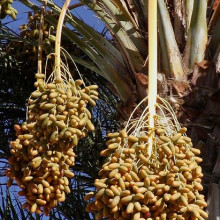
07:40 - 2000 year old seedling
2000 year old seedling
with Dr Sarah Sallon, from the Louis Borick Natural Medicine Research Centre, Israel.
Chris - To tell us the story of this extraordinary bit of horticulture is Dr Sarah Sallon. She's from the Louis Borick Natural Medicine Research Centre in the Hadassah Hospital, Israel. Hello Sarah.
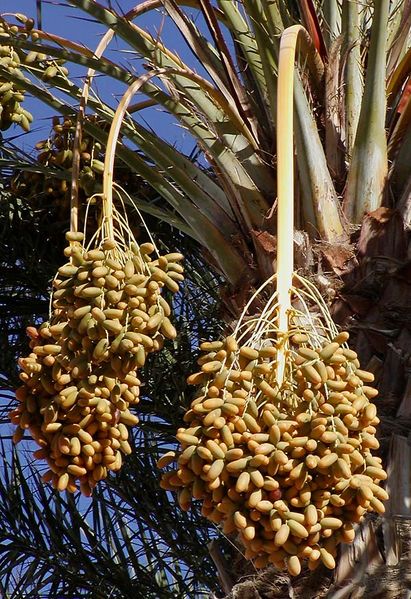 Sarah - Hello, hi Chris. How are you?
Sarah - Hello, hi Chris. How are you?
Chris - Very well, thank you. Thank you for joining us on the Naked Scientists. Where did this 2000 year-old seed come from?
Sarah - Well, the seed is a baked seed and it was discovered at the archaeological site of Masada which is Herod's palace, built above the Dead Sea about 2000-and-something years ago by King Herod.
Chris - What was the seed doing there? Why hadn't it already germinated?
Sarah -
Chris - Since the 1960s where have they been, these seeds?
Sarah - Well, they've been in the University. They were stored in the department here in Bar Ilan University in Israel in the Department of Botanical Archaeology and actually the Department of Life Sciences. It's where they keep botanical artefacts from archaeological excavations. They were there for 40 years until I had the idea of, as part of a larger project we have, looking and researching and restoring Middle Eastern plants which were found in this region. I had this idea to get the seeds from archaeological sites and to try and grow them. That particular date no longer exists in Israel or anywhere else. It's extinct.
Chris - How do you know it's 2000 years old?
Sarah - I don't because I didn't do the carbon-14 dating but we sent off two control seeds to the University of Zurich, their radiocarbon lab which is one of the best in the world. The two control seeds that were from the same site, were stored at Bar Ilan, came back at 2000 years old. In fact, plus or minus 50 years around the siege period. Then when our little date seedling, which we've nicknamed Methuselah, was about a year and a half old was being taken from its small pot by Dr Soloway (who germinated it) into a larger pot she found tiny fragments of the shell still attached to the roots. We sent those fragments to Zurich and the results came back about 2000 years. So we were very excited because that was direct evidence of its age.
Chris - Why did you decide to plant this in the first place? Because you must have thought there's no hope in hell this thing's gonna grow, it's 2000 years old!
Sarah - Well I never do things I don't think there's any hope in! If I didn't think there was any hope I wouldn't have done it. I was optimistically thinking that there could be. There had been other stories in the literature from China and 1300 year-old lotus seeds. Seeds from the Natural History Museum that germinated during the Second World War when there was an incendiary bomb and a lot of water was used to put them out. Some seeds in the Natural history Museum germinated in this period. I was kind of excited and we had, with some difficulty, got some from Bar Ilan University. It was part of our project on Middle Eastern plants which is to research plants of this region which are highly medicinal (many of which are mentioned in the Bible and also in the Koran) and to preserve them; to redistribute them in Israel where they have been destroyed; to study them for their traditional use.
Chris - When you did some genetic analysis on this plant is it similar to the date plants that are still around today or is it different?
Sarah - Anyone who's a geneticist who's listening to this will know that taking a seed which is produced from sexual reproduction, which the dates are because dates are male or female - taking one seed will not really give us any confirmatory evidence of its genetic characteristics. You need a population to give you an understanding of the genetic characteristics. Just looking at one seed which we've got at the moment it does kind of different from the standard cultivated date species that are around these days which originate in Morocco, Egypt, Iraq and which are now growing in Israel.
Chris - Will it be possible to breed from this plant which you've managed to re-grow or is there a chance that it might not be female and therefore it's going to be a lonely male and will never reproduce?
Sarah - I think that's a very sad statement that it might be a lonely male. We don't know and we won't know until it's about 6 or 7 years old when we'll see whether it has female reproductive organs and is therefore female or whether it's a male. If it is a female then we have a chance of perhaps producing dates using a male donor or maybe we'll be able to germinate another seed.
Chris - Let's hope so. Thank you very much, Sarah. Sarah Sallon who is from the Louis Burick Natural Medicine Research Centre at Hadassah Hospital in Jerusalem. She was talking to us there and she has broken the Guinness Book of Records for growing the world's oldest seed.
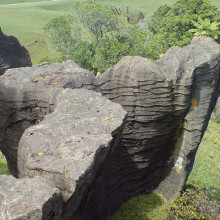
14:38 - What happens when acid reacts with limestone?
What happens when acid reacts with limestone?
Limestone is mostly made up of the mineral calcium carbonate (CaCO3). This is not very soluble, so rocks don't dissolve very quickly. But if you add an acid, you add hydrogen ions (H+), which will react with the carbonate to form hydrogen carbonate HCO3- ions, which are very soluble in water, and the limestone will dissolve. Or, if there is more acid, two hydrogen ions will react with a carbonate to form carbonic acid - H2CO3 - which will decompose to form carbon dioxide - CO2 - which eventually bubbles off into the atmosphere, and water H2O.
The acid can come from a variety of sources: sulphur and nitrogen oxides released by burning fossil fuels will form sulphuric, sulphurous, nitrous and nitric acids, and carbon-dioxide itself can dissolve in water to form carbonic acid.
Why do glasses, cups and plates have a ridge around the base?
If you imagine a plate with no ridge and there is some small piece of grit, food or dirt on the table the plate would rock and make it difficult to eat off it. However if you have a ridge it is very unlikely the grit is under the ridge itself and even if it is when you move the plate slightly the plate would fall off the grit becoming stable again.
It is also probably more difficult to manufacture a perfectly flat piece of pottery than a ridge that is the same height all the way around.
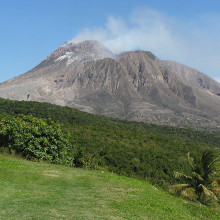
21:40 - Looking into a volcano
Looking into a volcano
with Dr Marie Edmonds
Richard - Erupting into the studio now from the University of Cambridge is volcanologist, Marie Edmonds. Hello Marie.
Marie - Hello Richard
Richard - First off, most people know what volcanoes are but what's actually going on inside one?
Marie - What we see at the surface with volcanoes is really only part of the story. Part of my work is looking at magma de-gassing and looking at the gases that are emitted by volcanoes at the surface can tell you what's going on deep in the crust.
Chris - What sorts of gases are coming out of volcanoes?
Marie - Volcanoes emit lots and lots of water and then lots of carbon dioxide, sulphur dioxide, halogen gases and various minor trace components. Water, CO2 and SO2 are the main gases.
Richard - How can we actually analyse these gases and what can they tell us?
Marie - I go with the spectrometer to the volcanoes which is a really good way pf doing it safely. I can go a kilometre away from the volcano, I don't have to go right up to the vents and fill little glass bottles with gases. I can use spectrometers to remotely look at the composition of gases and work out from that what's going on beneath the surface. Gases are, if you like messengers for me to the crust.
Chris - What's a spectrometer? How does it work?
Marie - Gases absorb radiation in characteristic wavelengths so each gas is associated with its own unique signature. If we collect infrared radiation, it could be from the sun, a lava flow or a lava dome. The infrared radiation passes through volcanic gases so what we're looking at is a spectrum which contains all of the unique absorptions due to all the different gases. We can quantify their concentration.
Chris - So this is a neat way of monitoring the volcano without having to put yourself in quite a lot of danger, by getting really close. You can see what the gas composition is remotely.
Marie - That's absolutely right. Volcano monitoring has come a long way since the development of techniques like this. In the last decade or so these techniques have become more and more sophisticated.
Chris - What does this analysis of the gases tell you about the behaviour of different volcanoes?
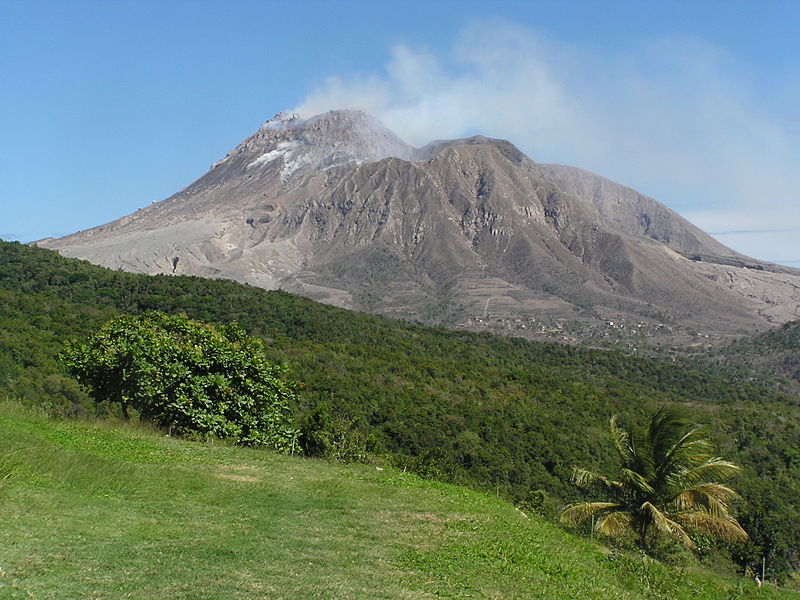 |
| The Soufriere Hills Volcano on Monserrat © EvaK @ Wikipedia |
Marie - The idea is that each volatile species: water, CO2 and so on - they dissolve at different pressures. As magma is coming up from the base of the crust first of all carbon dioxide will exsolve. When is gets to very shallow levels gases like water and SO2 exsolve and form bubbles in the magma. If we measure gases which have very high CO2 content, for example, we know that the gases separated from the magma at depths of a few tens of kilometres. If the gases are rich water then we know that de-gassing is occurring at a shallower depth. We can infer something about the eruption. We can to an extent forecast a volcanic eruption this way.
Chris - Because most people think a volcano just blows up catastrophically like Mt St Helens which is in every geography textbook as the massive, explosive volcano but others are sort of more oozy and splurge out lava without really doing much. Does one turn into the other or is there a risk that one might be one of those kinds and then suddenly explode? What do we know about volcanoes' behaviour?
Marie - A whole different range of volcanoes and different styles of activity. I have actually measured the composition of giant bubbles that have come up very low viscosity magma columns at Kilauea volcano in Hawaii. If you go to a completely different type of volcano such as Soufriere Hills volcano in Montserrat which is an explosive type of volcano and crucially it has very high viscosity magma. This type is the most unpredictable and in some ways the most interesting because it can transform from very effusive dome building activity to explosive, ash-producing eruption columns over the space of a few minutes. That's what makes this type of eruption very interesting.
Chris - Because you're going to back to Montserrat, aren't you?
Marie - Yeah, I've already done a trip there this year to measure CO2 fluxes from the flanks of the volcano. We still know very little about what goes on at depth and what's actually driving the eruption. I'm due to go back in a few weeks' time to continue those measurements. We're going to install a gas sensor close in to the volcano to try and measure the proportion of CO2 to SO2 in the hope that this will give us some idea of whether the eruption is waning or whether it's accelerating: what we can expect in the next few month in terms of activity.
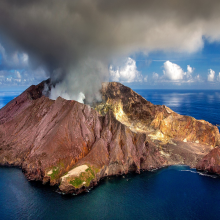
How much pollution does a volcano produce?
We asked our guest Marie Edmonds, volcanologist at the University of Cambridge...
Marie- This is a very good question and it gives me an opportunity to dispel some of the myths about volcanoes and global warming and pollution. Volcanoes emit CO2 and SO2: carbon dioxide and sulphur dioxide are the main gases that might be construed to cause global warming or pollution. Volcanoes emit around 100,000,000 tonnes of CO2 a year. Compare that to man-made emissions of CO2 which comes to about 30,000,000,000 tonnes of CO2 per year*.
So volcanoes emit around 1/300th of CO2 that we do and are therefore insignificant in terms of global warming. Sulphur dioxide on the other hand, volcanoes emit around a tenth of the anthropogenic emissions of SO2. That forms regional smog.
Chris- Isn't there a benefit of sulphur dioxide in that it reflects heat back in to space? In fact it cools down the Earth so volcanoes are quite good in that respect because they keep us cooler than we otherwise would be.
Marie- Yes. There has been some research in the last few years that suggests very large eruptions such as Pinatubo in 1991. That eruption emitted about 20 megatonnes of SO2 into the stratosphere. Eruptions such as those which happen once every decade in fact have slowed down global warming a little bit. Without those eruptions we'd actually see the effects of global warming much more now than we do.
[* Value correct for 2008-10]
Is there any way to stop a volcanic eruption?
Marie -The quick answer to that is no. I think it would be foolhardy at best to try and interfere with the processes going on in a volcano. There have been instances of people trying to divert lava flows, for example, by spraying water on then and blowing them up with explosives - Chris - And building canal systems for them to run into preferentially.
Marie - That's right but actually trying to alter active processes at the vent wouldn't be advised.
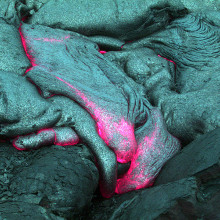
29:06 - Quakes from within the magma
Quakes from within the magma
with Professor Peter Sammonds, UCL
Meera - Just before a volcano erupts there are often earthquakes of varying intensities. Scientists had already realised that the movement of molten rock, or magma, can often cause these quakes. What they hadn't realised was that even at very high temperatures, when you would expect magma to be soft, it can still fracture like brittle rock. It is the vibrations triggered by these sudden fractures that go on to become the earthquakes that scientists pick up. This was discovered recently by UCL researcher Professor Peter Sammonds using his very own laboratory based volcano.
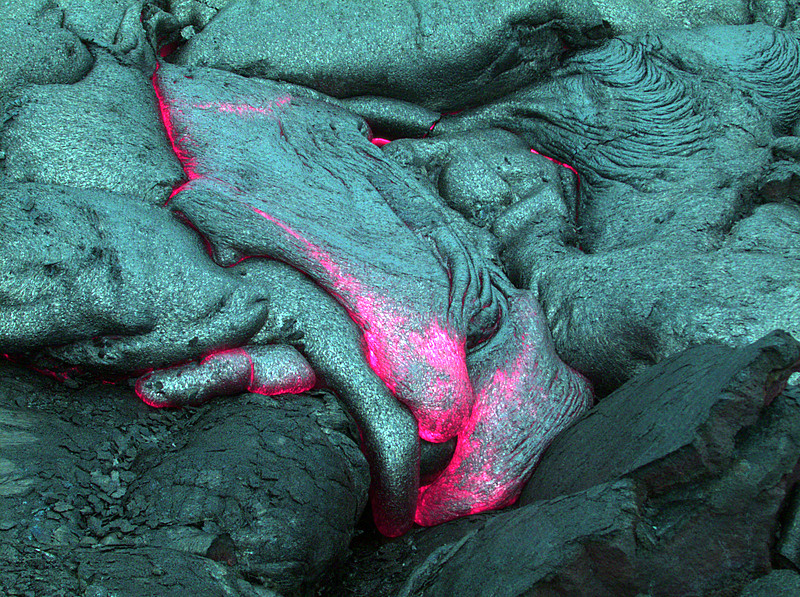 Peter - What we did was in the laboratory was to try and simulate the conditions of a volcano: pressures up to a few megapascals, temperatures up to thousand degrees centigrade and even higher.
Peter - What we did was in the laboratory was to try and simulate the conditions of a volcano: pressures up to a few megapascals, temperatures up to thousand degrees centigrade and even higher.
Meera - In front of us we've got a rather large metal structure with dials on one side and in the centre there are large metal cylinders with larger cylinders sprouting out of the top. It is all connected to a computer as well. So how did you go about recreating volcanic conditions with this metal instrument?
Peter - Well the lower part has what we call pressure vessels. These contain a gas at high pressure. We put the rock specimen in there. Our typical sort of test specimens are cylindrical cores about 25mm in diameter and about 75mm in length. We then heat the specimen up with an internal furnace to 900 to 1000 degrees centigrade. Then we have a piston which is driven down onto the rock sample until the rock starts to fracture. Then using an acoustic transducer, which is a bit like a microphone, we listened to the acoustic activity or microseismicity to see how the rock at this very high temperature was fracturing and the nature of that fracturing.
Meera - We have two of the samples that you used during the experiments. What are these?
Peter - We used two quite contrasting samples. We have a sample of lava from Mount Shasta in North America which is a crystalline lava called an andesite. We also used an obsidian which is a glassy lava from Krafla in Iceland. In a sense these represent the two end members of rock type you might wish to look at: a glass on one hand and a crystalline rock on the other.
Meera - So having actually put the samples inside and recording the seismic activity what did you find?
Peter - First of all we found that we could get these rock samples fracturing up to about 1000 degrees centigrade. This is showing you do get fractures up to very high temperatures in rock. We could deduce that certain types of earthquakes are maybe caused by this high temperature rock fracture. The second thing we showed was that we had patterns of seismicity coming up towards fracture that had particular characteristics about them. This was indicative that a through-going fracture was going to occur.
Meera - So what volcanologists are now hoping is that if we can understand these patterns of activity a bit better, we will be able to predict when a volcano might be about to erupt.
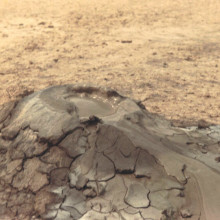
33:48 - Mud volcanoes
Mud volcanoes
with Prof Richard Davies
Chris - Hello Richard. Thank you for joining us. How much mud are we talking about coming out of these mud volcanoes?
R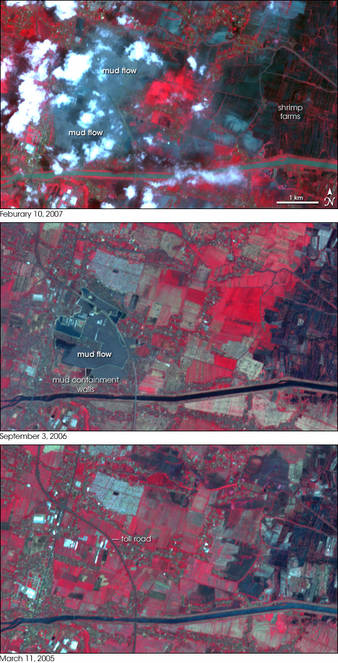 ichard - It's been erupting 20-50,000 cubic metres per day for the last two years. It now covers seven square kilometres. It's about 20m thick in its central part and then sort of feathers out a bit like a pancake, basically.
ichard - It's been erupting 20-50,000 cubic metres per day for the last two years. It now covers seven square kilometres. It's about 20m thick in its central part and then sort of feathers out a bit like a pancake, basically.
Chris - When we say a 'mud volcano' is it genuinely mud that's coming out?
Richard - It's a mixture of mud, saline water and gases: methane, hydrogen sulphide, carbon dioxide. It's a mix. It's about 79% water and the actual mud is about 20%. It's a very dilute mud volcano.
Chris - What's the impact on the local environment of this?
Richard - Well, unfortunately this is the only mud volcano that's erupted into a highly populated area so 30,000 people have lost their homes. There's been 13 fatalities. There are factories that have had to close, schools etcetera. Because this thing is carrying on and developing all sorts of other things are starting to happen. The area is subsiding, the central parts of the volcano are subsiding at 4cm per day. It doesn't take long to work out that's about 14m per year. As long as the mud volcano continues the effects are going to increase and one can only speculate that in ten or so years' time and it's still erupting that rivers may have been diverted. All sorts of environmental impacts will have occurred.
Chris - Geologically speaking, what is going on underneath this mud volcano?
Richard - Down at about 3000m depth there is a limestone called the kujung limestone and this is a fantastic aquifer. It contains a lot of water. It has a lot of permeability which means the water can flow very easily. That is leaking up into a mudstone which is a 100ft higher up and then it's pulling with it the mudstone and bringing it to the surface. It's driven by pressure but also there's gas in the mud-water mix. That gas is also probably providing some of the lift mechanism in similar ways to the earlier speaker who talked about igneous volcanoes.
Chris - What do we think triggered this to happen?
Richard - Well it was almost certainly triggered by the drilling of an exploration well. We've now got detailed data from the well. The well was being drilled 150m away from where the eruption started. We know that on the 27th May overnight, going on to the early morning of the 28th May in 2006, they had some major operation problems. I'll summarise what actually happened. Basically, they had what is called a kick which is an influx of gas and water into the well bore. The only thing they could do to stop this kick of gas and water coming to the surface was to shut in valves at the surface. When they shut those valves in they recorded pressures that went beyond the critical pressure at which the underground rocks started to fracture. So the fractures basically developed and propagated to the surface. The following morning, May 29th 2006, mud water and gas started to erupt.
Chris - But the company have gone on record saying it was a local earthquake that did this?
Richard - It's not so local. It was 280km away, 6.3 in terms of magnitude. It's been shown by Michael Manger who's a Professor In Berkeley that this earthquake would have been too small and too far away. In the paper we've just published we've shown in the first part of the paper the earthquake was really just too small and too far away. The second part of the paper lays bare all the data and all the facts on what happened with the drilling of this exploration well.
Richard VN - This thing has been going for two years. When is it going to stop?
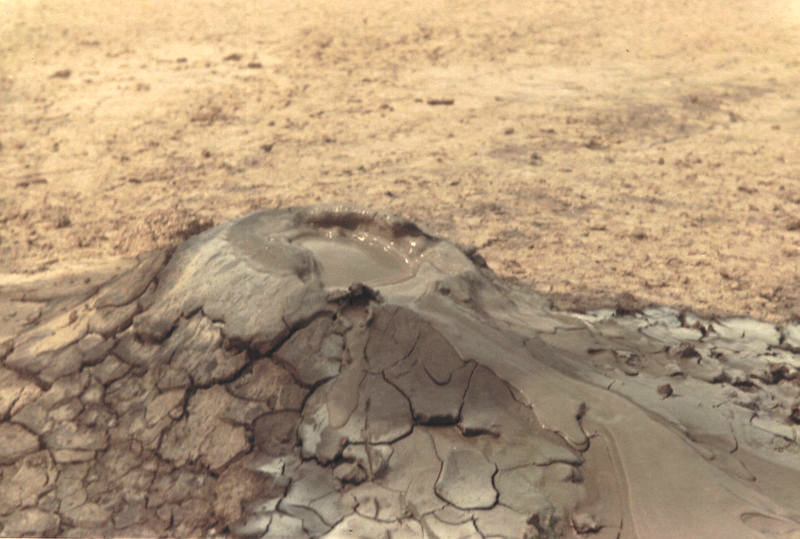 Richard - Very good question. It's gone on for two years pretty much unabated which means they have tapped into a very, very good aquifer. We can estimate how long we continue for by looking at the size of the aquifer, the original pressure in the aquifer and how long it would take for that pressure to drop to normal levels. The fact it has gone on for two years without showing signs of stopping I think means it will go on for many years to come. Even when the pressure has depleted there will be gas in the system. The gas provides a lift mechanism as well: just like taking the lid off a Coca Cola(TM) bottle. The gas will pull the mud up. It will give it some buoyancy.
Richard - Very good question. It's gone on for two years pretty much unabated which means they have tapped into a very, very good aquifer. We can estimate how long we continue for by looking at the size of the aquifer, the original pressure in the aquifer and how long it would take for that pressure to drop to normal levels. The fact it has gone on for two years without showing signs of stopping I think means it will go on for many years to come. Even when the pressure has depleted there will be gas in the system. The gas provides a lift mechanism as well: just like taking the lid off a Coca Cola(TM) bottle. The gas will pull the mud up. It will give it some buoyancy.
Can we harness volcanoes to modify the environment?
Our guest Marie Edmonds answered:
I think what we can do is harness geothermal energy. Usually we wait for volcanoes to be in periods of rest, not active eruption. This is certainly done in Iceland and New Zealand.
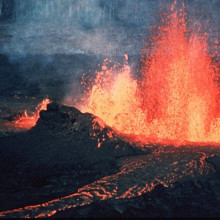
Why don't you stick a cork in a volcano?
That's a very nice idea but I think in practise that wouldn't work. Enormous pressures build up in conduits and magma chambers in volcanoes. I think you'd need a very large cork.
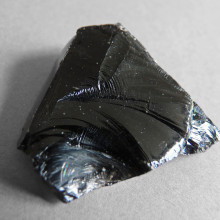
What rock looks like glass inside and mineral outside?
It certainly could be volcanic glass. There's a glass called obsidian, which is silicic magma. The way to recognise it is if it's got a fractured surface and it's curved, Glass generally forms these curvy planar surfaces when you break it.
Harder materials scratch softer ones, hardness is measured on the Moh scale: Diamond is 10, talc (of the powder) is 1. Window glass has a hardness of about 5.5, so there are a lot of materials which can scratch it, including hard steels (6.5), silica in quartz or flint (7) etc. In fact, flint is another possibility for your mineral as that can look very like a glass, so it's another possibility for your material.
Are there more dense materials in the earth's core?
We asked our guest Marie Edmonds
Marie - Yes. Certainly what we call refractory elements such as osmium, iron and nickel. Throughout history all of these heavy elements have been migrating towards the core and all the light elements have been migrating to for the crust so yes. Chris - Aren't there some companies being formed that want to exploit the minerals that are being brought from the surface in hydrothermal vent systems? Aren't they enriched with minerals and things that are quite hard to get hold of but because the Earths doing the work geologically for us then that's a useful way to do it?
Marie - Certainly hydrothermal systems around volcanoes: fluids bring a lot of these metals like gold, silver into the volcanic edifice and they get precipitated into the volcanic system. A very easy way of mining these is to dig into a volcanic edifice where they're concentrated.
Will melting ice change the shape of the earth?
It depends on how long a time scale you are looking at. Over a few tens of years then probably not, the mantle below the crust behaves pretty much as a solid over periods of tens of years. But if you look over thousands or millions of years, then yes the areas where the ice has melted from will lift slightly and the areas the water has moved to will sink. During the last ice age Scotland was pushed down a few metres by the 2km of ice sitting on top of it, and since the ice melted, 10 000 years ago, the crust has been floating back up again in a process called isostatic rebound. This affect is very small though in comparison with the size of the planet though.

44:22 - Can Cooking Cut Calories?
Can Cooking Cut Calories?
John Fry, Food Scientist and Chemist:
Burning the pizza will certainly reduce its energy content because some of the energy that you might otherwise have digested and turned into you goes up in flames and smoke. The black carbon that's left after you've burnt the pizza has got a lot less energy in it than the original.
Other cooking processes also cause loss of fat. Roasting a joint of meat is a good example. It's also common to rescue the fat and meat juices that drip from the joint for use in gravy or that great staple of my youth, bread and dripping.
Cooking can also directly increase the energy content of food by making it more digestible. Starch in particular is made more easy to digest by cooking it. Starch crops up as small tight granules in many cereals, vegetables and fruits. Humans have thought to find it easier to digest starch once these granules have been burst open and the starch released in a gelatinised form by cooking.
In short cooking can increase or reduce the energy content of a food depending what you do. If you want to eat pure calories then consuming less food is preferable to incinerating your pizza. Burnt food may have fewer calories but it also contains a lot of very toxic materials created by excessive heat and it doesn't taste that great.
What is happening with the Yellowstone supervolcano?
Yellowstone is a huge system and between eruptions which generally happen every six hundred thousand years or so it's not a dead system. Instead the magma chamber is inflating. Indeed, we can see that now at Yellowstone - a very slow rate of deformation - but it's certainly inflating, preparing for its next eruption which probably won't happen in our lifetime.
How do you find water underground?
We asked our guest Richard Davies
All rocks, all sedimentary rocks contain water. What we're really looking for is rocks that have porosity and permeability. So you can look at outcrops to find out which are the right suitable rock types and you can drill holes and hopefully intersect those rock types. All sediments contain water and it's actually when they're buried that you're actually squeezing the water out very slowly. It's really a matter of looking for the suitable rock types. For example, chalk beneath London is a suitable aquifer. It has been historically, anyway.
Do Underground Bombs Set off Volcanoes?
We put this question to Marie Edmonds and Richard Daives:
Marie - To my knowledge this has never been observed but in theory yes. Because certainly distant very large earthquakes can set off volcanic eruptions so presumably this is possible. Chris - Richard, one would think they might have an impact on mud volcanoes?
Richard Davies - Absolutely. That's proven that earthquakes can kick off mud volcanoes. If you go down to a beach and you jump up and down on the shoreline long enough you will create your own sand volcanoes through the same sort of process. You cause something called liquefaction when you turn the sediment into a liquid. Chris - Have we any evidence linking earthquake activity or bomb tests or anything like that to mud volcanoes really or is it just theory?
Richard - Well, now I've investigated the Lusi volcano I've heard of stories where mud volcanoes erupted at the same time as seismic surveys etcetera. I don't know if it's proven yet but it's certainly been suggested. If there's already a mud volcano there, in other words the pipe works is there already, it could happen. It could increase its activity level.
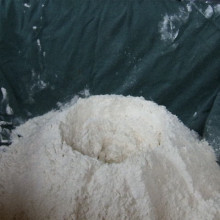









Comments
Add a comment